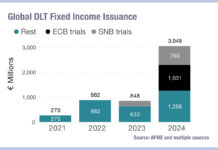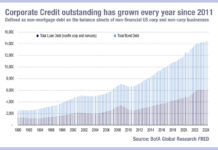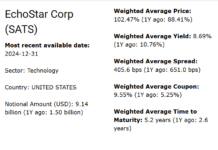A syndication specialist could improve operational efficiency and give asset managers greater control over primary market activity, writes Dan Barnes.
As primary markets evolve, a centralised syndication function could develop at investment managers, in order to efficiently bring new issuance to the attention of portfolio managers and engage in the trading and investment process.
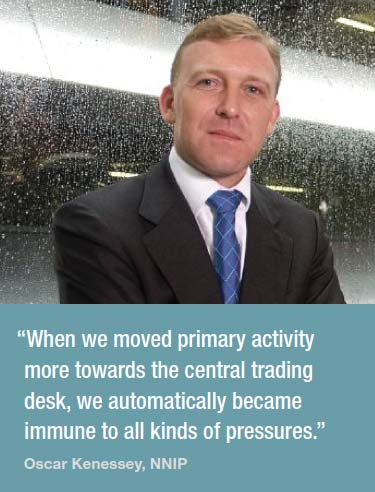 “To make it efficient it could come in at the trading desk,” says Oscar Kenessey, head of Trading at NNIP. “The trading desk then collects interest and builds a combined big order in the book. For instance, we have a lot of corporates in countries that are of interest to our high yield investors as well as our emerging market investors. There are always multiple portfolio managers for any new issue that find it interesting.”
“To make it efficient it could come in at the trading desk,” says Oscar Kenessey, head of Trading at NNIP. “The trading desk then collects interest and builds a combined big order in the book. For instance, we have a lot of corporates in countries that are of interest to our high yield investors as well as our emerging market investors. There are always multiple portfolio managers for any new issue that find it interesting.”
At present, issuance is typically dealt with individually by portfolio managers at many asset managers. A centralised role could not only strengthen a firm’s engagement in combining portfolio management and trading, it could ultimately help increase competitive pressure on investment banks and encourage them to reform the market.
There are two goals for reform; the first is greater transparency over the allocation process. The second, more controversially, is a structured issuance process, which was recommended by BlackRock in September 2014, when it made the case for “standardisation of selected features of newly-issued corporate bonds” as a route to enhancing liquidity in the secondary corporate bond market, which it described as “broken”.
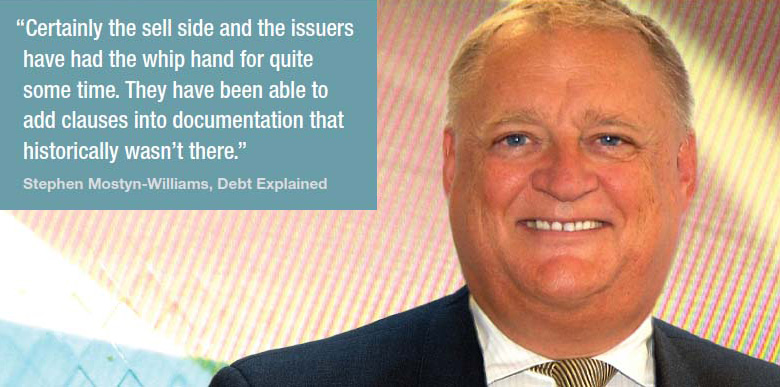
However, the status quo does not hurt banks or issuers. At present it is also a seller’s market, reducing the leverage buy-side firms can exert to encourage change. The low volatility and low rate environment has pressured investment firms to take greater risks in their hunt for yield, weakening their negotiating stance.
“With the increasing flow of money into the space, there are a lot of deals, but not enough to soak up all of the demand,” says Stephen Mostyn-Williams, chairman at Debt Explained, a high-yield deal analysis firm. “Certainly the sell side and the issuers have had the whip hand for quite some time. They have been able to add clauses into documentation that historically wasn’t there, and they have been able to cause things that at one time were exceptional to become pretty standard.”
These market conditions mean that investors must court banks, creating a latent need to cultivate relationships with particular dealers through the use of their services.
“There is absolutely no undue pressure that I see,” says Kenessey. “However at a centralised trading desk, precisely because it sees all flows, it is easier to put dealers’ performance across both primary and secondary markets in perspective and guarantee best execution. For any one portfolio manager there is a strong link between allocations in the primary market and performance.”
He continues, “At the same time best execution is harder to achieve for a single fund or strategy, because you are looking at only part of the flows. Non-centralised evaluation of primary activity is a less optimal.”, says Kenessey. “Inside a buy-side firm the participant in primary issuance is a source of performance, because you can pick up initial premiums and then over the cycle that is a considerable amount of returns.”
Consequently, asset managers need to find a way to strengthen their hand in order to drive the reform agenda.
Reform and regulation
Regulators have long sought to level the playing field for access to primary markets. In a report published in January 2017, analyst John Dwyer at Celent noted that the Financial Conduct Authority, the regulator for UK markets, has banned contractual clauses that restrict competition on future services.

“For example, if a bank becomes advisor to a client on a particular bond deal, that bank will seek to limit the client’s flexibility on which advisors it appoints on any subsequent primary issue in a given time period,” wrote Dwyer. “Such clauses typically take the form of a ‘Right of first refusal’ or ‘Right to act’ and are sought by investment banks following appointment in a specific role.”
The unbundling of research and execution under MiFID II is also creating greater transparency around the relationship between the buy and sell side, giving traders a greater ability to determine which dealers they use.
Technology is also enabling a more transparent way of working, with much buy-side support. Ipreo, a software provider, offers IssueNet, a fixed income syndicate connectivity tool and Investor Access a tool which alerts investors to new-issue announcements including terms and conditions.
In November 2017, the firm reported more than 800 deals had been published on the Investor Access system, of which more than 400 were open for orders. In addition, the number of banks publishing deals grew to 27 in October 2017 up from 11 in January 2017. During September and October, approximately 80% of all Euro issuance and 65% of all Sterling issuance was published by the banks over the platform. Participating in new issues electronically, and with an audit trail, greatly assists with the scrutiny that buy-side trading desks are under, and supports a more democratic model of investment.
Likewise, Overbond, a financial technology start-up, which employs proprietary machine-learning and predictive analytics to try to help deliver real-time credit investment opportunities to investors. It has integrated its data analytics suite for primary bond market quotations with Egan-Jones Rating Company, Moody’s and Standard & Poor’s credit ratings data, along with Thomson Reuters and DBRS. It makes a point of delivering via both mobile and desktop applications and smart notification systems.
Other firms are tackling the communication between buy side and issuers. One firm, Ingage, provides a platform for corporates to communicate in a two-way dialogue with investment firms, anonymously, using close-ended questions to assess the issues that matter to investors.
One Ingage customer, investment manager Schroders, noted, “There is substantial risk that any feedback that we give to companies via their broker or advisor is filtered and even diluted. We are therefore reluctant to channel feedback via this route. However, Ingage offers us a simple, un-conflicted way of passing feedback to the companies we meet, whether attributed or not.”
The operational support that these technologies offer to PMs is considerable in itself. Automating the issuance and corporate access mechanisms provides a substantial benefit to firms that are struggling to get the best deals in as transparent a way as possible.

“In terms of issuance, sometimes it’s only a matter of hours in which PMs can react to whether they actually want to participate or not,” says Larry Tabb, founder & research chairman at analyst firm Tabb Group. “So there are challenges around how firms are starting to respond to this. Firms like Ipreo can help pull all this information together and a couple of other start-ups are trying to streamline the process. But it’s not easy.”
Getting access to professional understanding of the risks involved in covenants and contractual clauses also aids the pricing process, and allows firms to react more quickly.
“You have access to a database on the web that does all of this for you,” says Mostyn-Williams. “That’s all part of making the process a lot more effective, efficient and transparent, and should lead to much better execution to the market in every way. People should be pricing deals based upon the overall picture, the credit and the terms and the risks in the credit and the risks in the documents.”
Possible progress
However, the adoption of a platform for issuance requires a critical mass of users.
Tabb says, “The problem is that, because origination is syndicated, there is no one company that has the full depth of capital or product that is outstanding. If one bank creates a more streamlined process, that only helps when they are the underwriter or the originator. The problem can’t be tackled by one buy side firm either. So you really need some sort of community solution.”
At present the adoption of technology can increase the potential for buy-side firms to see the market more clearly and be more assertive when negotiating with issuers and investment banks. Further strength could be gained by centralising syndication activity within the buy side, so a firm gains greater awareness of its engagement with issuers and broker-dealers.
“When we moved primary activity more towards the central trading desk, we automatically became immune to all kinds of pressures I would say,” says Kenessey. “In a perfect world to take it to the next level one could think of a centralised ‘syndications portfolio manager’, who looks across all the portfolios in an organisation. Then because it’s a centralised function from a compliance perspective and process perceptive it would be better to allocate that portfolio manager to a central trading desk.”
In combination, the use of technology and centralised syndication functions, supported by regulation, could give the asset management community access to primary markets more on its own terms. That would then potentially pave the way for reform of the issuance process.
©TheDESK 2017
TOP OF PAGE


